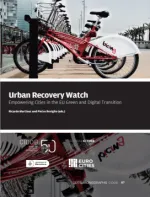Metropolitan areas: seeking recognition in the context of urban recovery funds

Some 75% of European citizens live in cities and urban areas. The most fundamental challenges related to environmental and social issues are concentrated in urban and metropolitan areas. However, metropolitan areas do not have the adequate tools to address these challenges. Indeed, there are few examples of metropolitan governments. Both international reports and the academic literature describe the lack of incentives for metropolitan cooperation (United Nations Human Settlements Programme, 2022; ESPON, 2021; Zimmermann et al., 2020). Moreover, metropolitan governments have a scarcity of financial resources, and their representatives have been requesting more funds to address key issues like sustainable mobility, social cohesion and healthy environments in urban areas (Tomàs, 2023a).
This is why EU instruments like Next Generation have the potential to accelerate planning and investing at this scale. The €672.5bn from the Recovery and Resilience Facility (RRF) funds could be the seed for cooperation between municipalities that would not occur spontaneously. Moreover, the RRF could potentially be an opportunity for metropolitan areas to be recognised as important players on a national scale.
This chapter analyses how RRF funding has been received by metropolitan areas, the way in which these funds are invested, and the governance mechanisms in place to structure the work between the national and local level. To do so, we focus on three case studies: Barcelona, Lyon and Turin. They are medium-sized metropolitan areas, they are not the capitals of their countries and all have a two-tier metropolitan government. As we will see, they present some specificities due to their national political cultures and political systems.